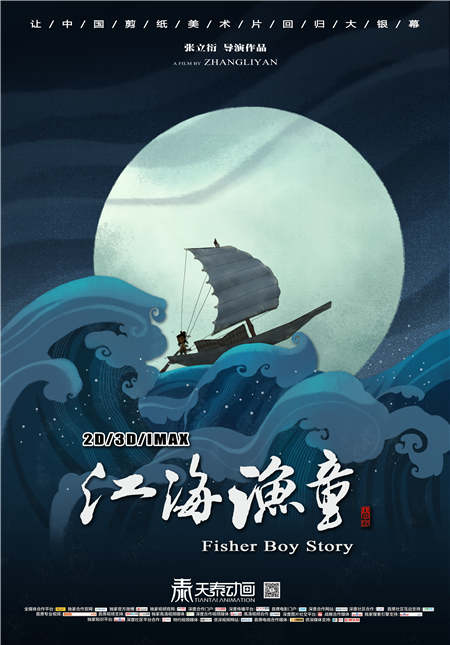 |
|
A Fishboy's Story [Photo provided to China Daily] |
Japanese cartoons
Many Chinese who grew up in the late 1980s and 1990s cheerfully recall childhood days when they saw Japanese cartoon characters such as Astro Boy, Doraemon, Saint Seiya and Sailor Moon.
Television sets were then starting to become part of Chinese living rooms and TV stations made imported animation series a staple of their programming. One of the rare popular Chinese TV series was Calabash Brothers, a paper-cut animation aired in 1987.
Like many in China who became cartoon aficionados in that era, Zhang Liyan, the director of Calabash Brothers, who last year made a sequel to celebrate its 30th anniversary, gained his inspiration from Japan.
Zhang, 45, recalls the Japanese manga series Dragon Ball and its animated TV series when he was preparing to enroll for art college in 1990.
"It had a huge impact on me," says Zhang, who had studied Chinese painting when he was a child.
"It opened my eyes, making me realize there was another way of drawing."
When an animation studio came scouting for recruits among students in his school the response was overwhelming, he says.
"Almost half the class applied, including me."
After two years of study and work, Zhang learned how to make animation and opened his own company in the mid 1990s.
He then spent a decade struggling to come to grips with the nascent private sector.
"It was very tough. Many companies were founded and just as quickly died, but I stuck to it because of my passion for animation."
In 2003 Zhang was given the opportunity to study traditional Chinese animation at the Shanghai Animation Film Studio.
"These old artists showed me how to make animation using puppet or paper-cut characters. Not only did they teach me so much, but their wisdom and dedication inspired me."
Since then he has made several animations in the traditional Chinese style, using ink and brush, puppet and paper-cut.
Zhang's ambition to revive traditional Chinese animation is materializing in his project A Fishboy's Story: Tortoise form the Sea, an animated film featuring Chinese papercutting techniques that he hopes will go on the big screen next year.
In the film Zhang's team has used computers to replicate the texture and feel of paper-cut characters, and has set the story in the Ming Dynasty (1368-1644), telling how a young fisherman overcomes his fear of water and of his adventure with a huge tortoise.